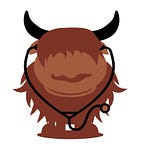Burns Night 2023 and the Advent of the AI Chatbot in Ophthalmology
It’s Burns Night — 25th January 2023. The cold Winter evening during which we celebrate Scotland’s beloved poet Robert (Rabbie) Burns, celebrating warmth, friendships and haggis — all in the form of Burns Supper.
I attended quite a phenomenal evening organised by my colleagues, and I am still having flashbacks about their scallops, neeps & haggis, plus that whisky sauce
During the evening, it is customary for guests to be given tasks, and mine was the lynchpin Immortal Memory — a “spell-binding oratoration on the life of Robert Burns”.
Now, I felt a little intimidated by this role, and didn’t quite know where to start. However, I had just started testing out the recent January 9th update of ChatGPT 3. My speech was rendered from a sisyphean task to a doddle for deep learning, with the transformer architecture giving me some bespoke content with a Liverpudlian theme.
Following the round of post-speech claps, I volunteered that I had asked ChatGPT to write the speech whilst visiting the facilities. I received a group giggle, and a gaggle of guilt.
At that time, two of our esteemed Medical Retina consultants had just heard of ChatGPT, for the others it was a completely unknown quantity. I gave a potted summary of the potential and risks for AI chatbots and the role it may have in complementing healthcare.
Even in my excitement I had no idea, whatsoever, how ChatGPT and other AI chatbot platforms will dominate 2023 discours: School essays, exams in law & medicine, applications, letters, TV and film scripts, academic manuscripts, art, it’s taken over.
In Ophthalmology and Medicine, there has been a lot of excitement, eg
Appointment Scheduling/Followup — streamlining appointment booking process, allowing patients to schedule eye exams or follow-up appointments conveniently, patient reminders, asking about recovery progress/adherence etc… reducing administrative burdens on staff.
Symptom checking/triage — Preliminary patient assesment — histories, symptoms etc.. prioritising patients based on urgency and severity.
Remote monitoring — Enable remote monitoring — symptoms and progress esp diabetic retinopathy and glaucoma — collecting data & alerting clinicians to any concerning changes.
Documentation — AI can generate documentation from patient interactions, avoiding duplication of work for clinicians eg summarizing patient histories, chief complaints, visit notes.
Referral coordination — Steamlining the referral process by collecting necessary information from patients & transferring it to specialist clinicians.
Patient education — Information about conditions, treatment, meds , pre- and post-op care. Empowers patients with knowledge & fosters better engagement in their healthcare.
Patient comms — Patients can use chatbots to send quick questions to their clinicians when something comes up between visits. This facilitates continuous care.
Meds Reminders: Ensuring patients adhere to their prescribed treatment
Pre-op guidance: Guiding patients so they understand the process, necessary precautions, and post-operative expectations.
Telemedicine: Collecting preliminary information and assisting clinicians during virtual appointments
Data Analysis: eg VA or IOP measurements, generating reports for clinicians, assisting in diagnosing and monitoring eye conditions.
Research and Training: eg Simulating patient interactions and helping them learn about various eye conditions and treatment protocols.
As EYE section editor, I have noted the decent number of papers which feature AI chatbots. Two valuable recent articles have shed light on the use of large language models (LLMs), esp. ChatGPT, in Ophthalmology
The first paper by Lin et al. compared the performance of LLMs GPT-3.5 and GPT-4 with human ophthalmologists on a comprehensive ophthalmology examination. G+PT-4 and humans exhibited similar overall performance, surpassing the passing threshold, while GPT-3.5 fell short. However, both LLMs struggled when faced with image-based and higher-order questions, in contrast to text-based, fact-recall questions. The second paper by Ting et al. explored ChatGPT’s broader potential in the medical field, emphasizing applications in patient care, professional consultations, research & education.
While the potential of models like ChatGPT in medicine is exciting, it is vital we approach implementation cautiously and avoid overreliance on any single “one-size-fits-all” proprietary model. I’ve tried to promulgate the need for multiple transparent, accountable models designed specifically for healthcare in collaboration with medical professionals. We always need to be cautious and critically appraise strengths and weaknesses of different AI systems, to ensure patient safety and responsible adoption of AI in medicine.
